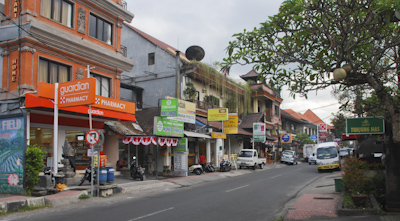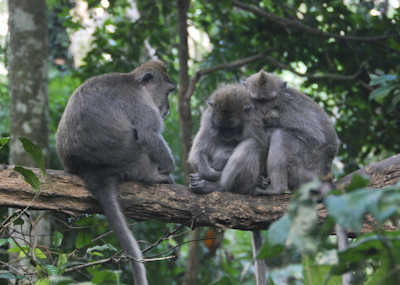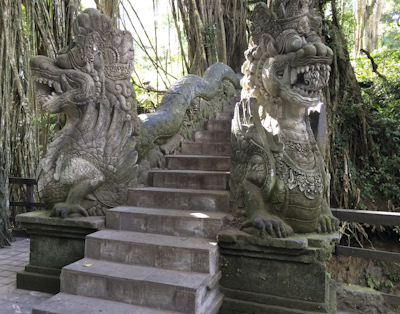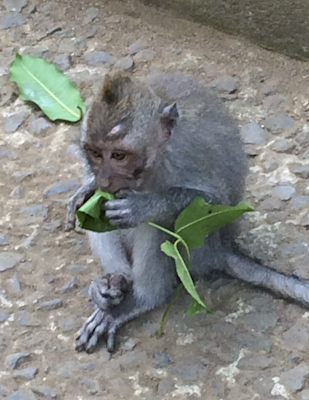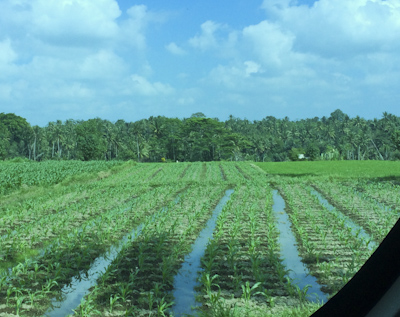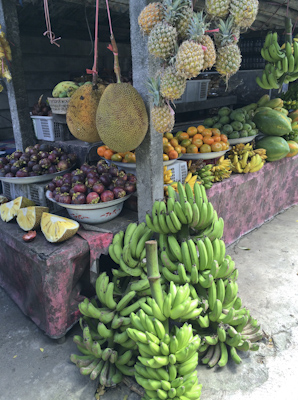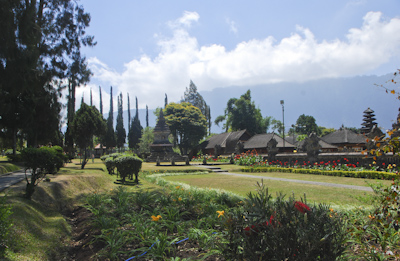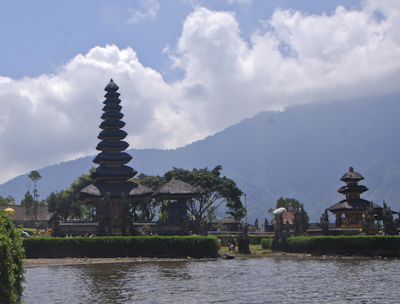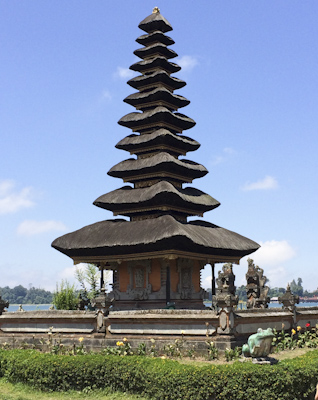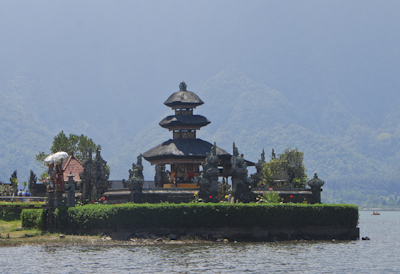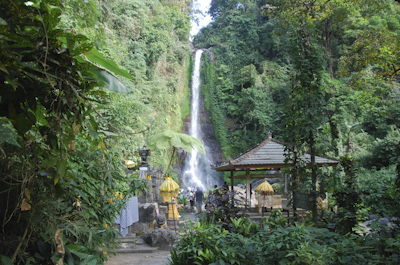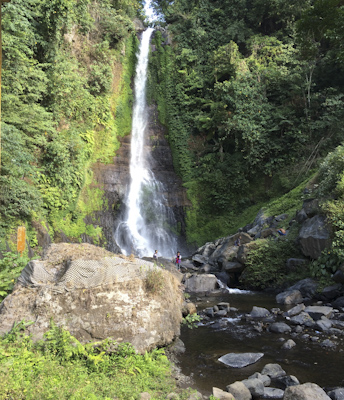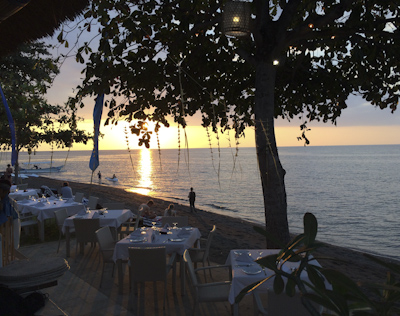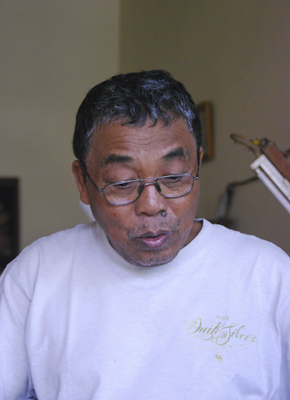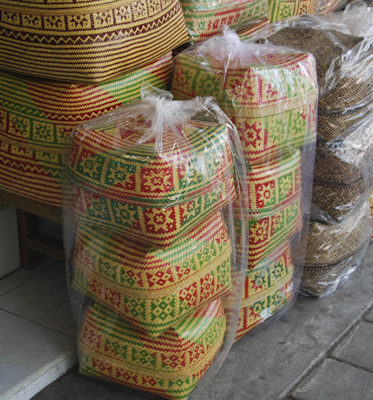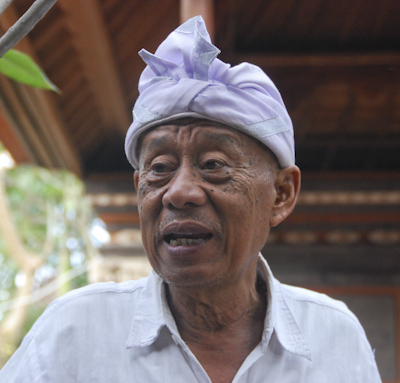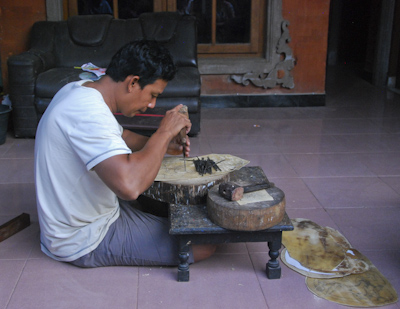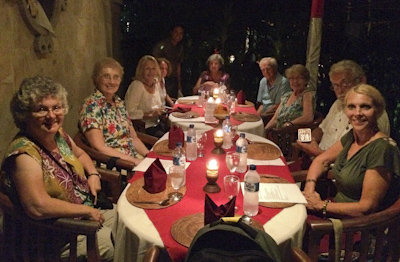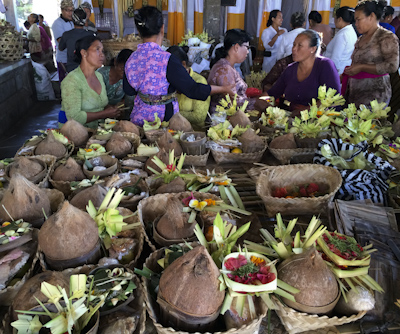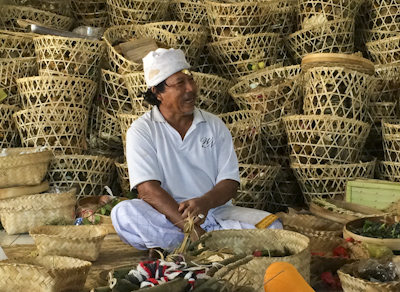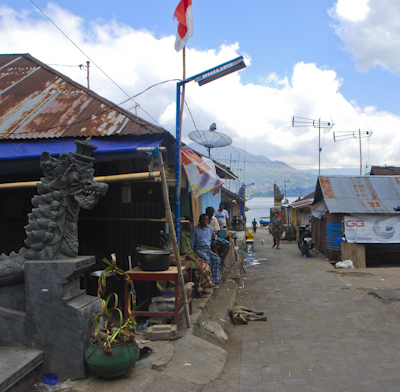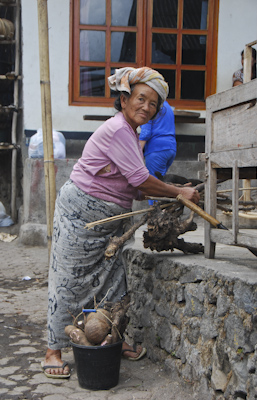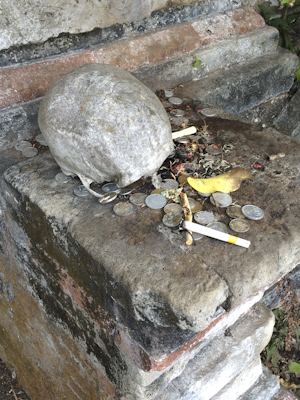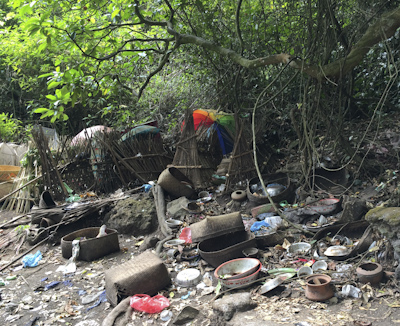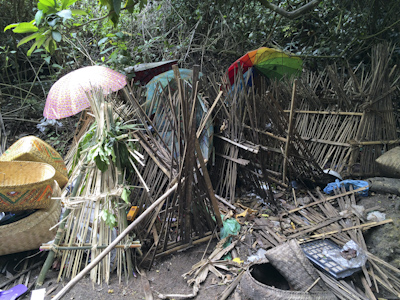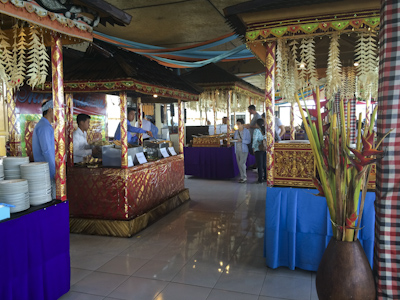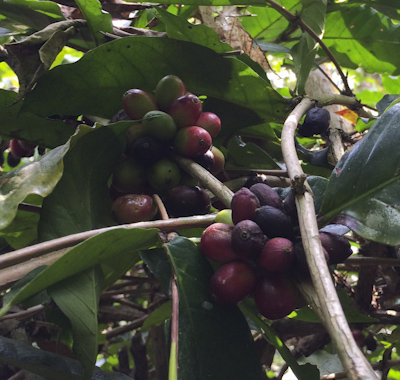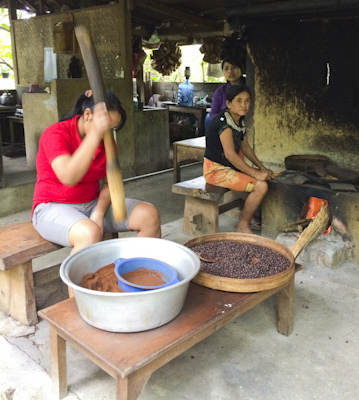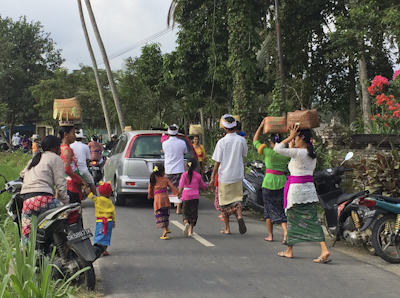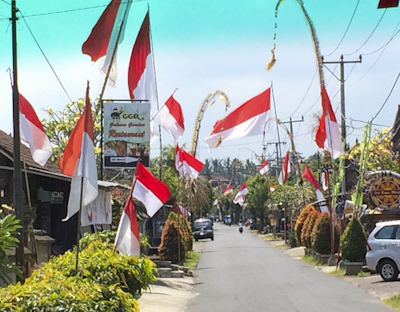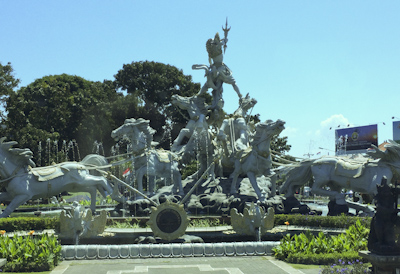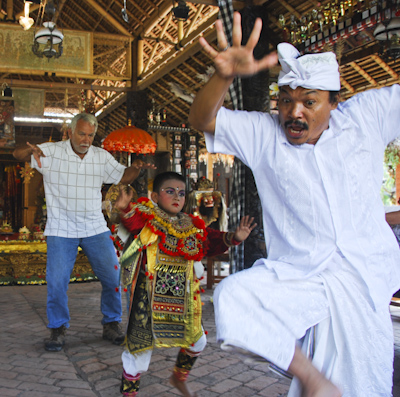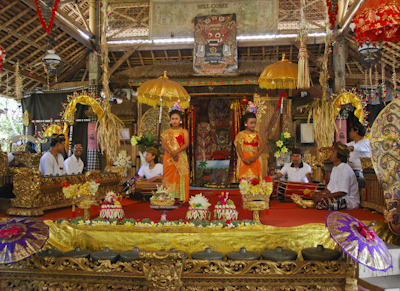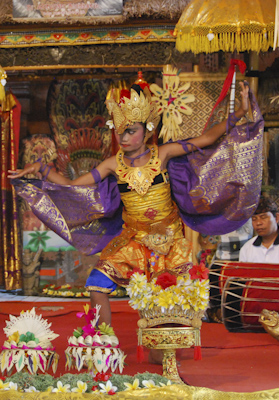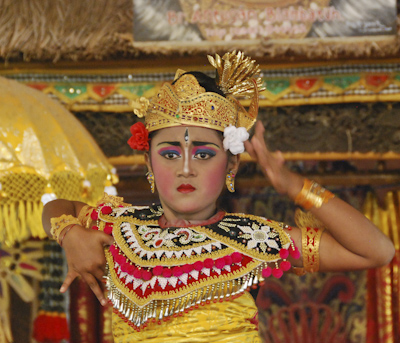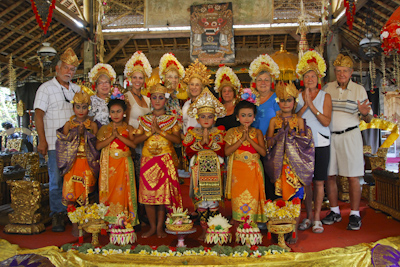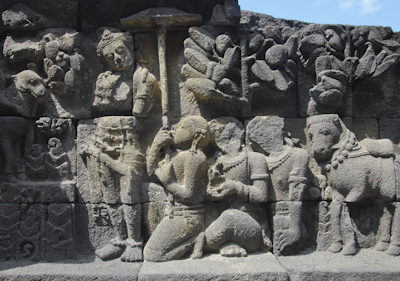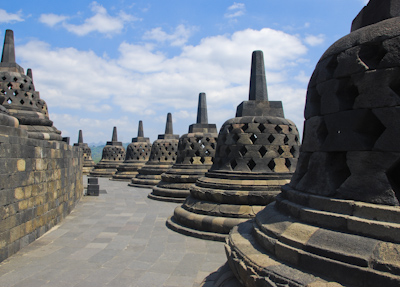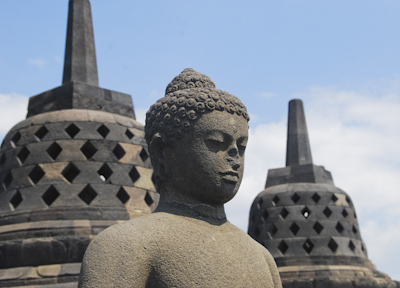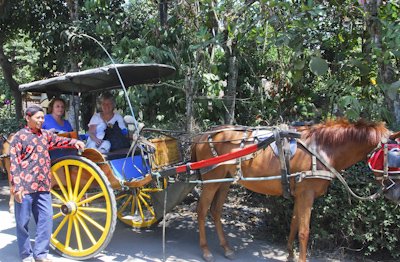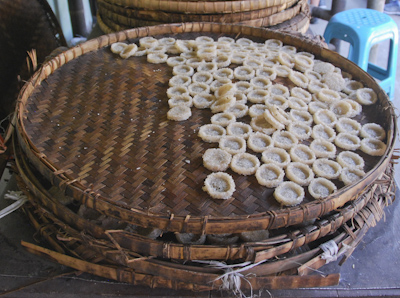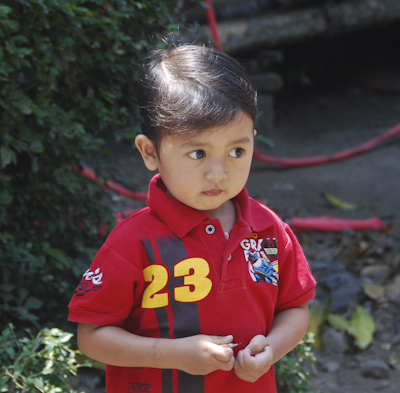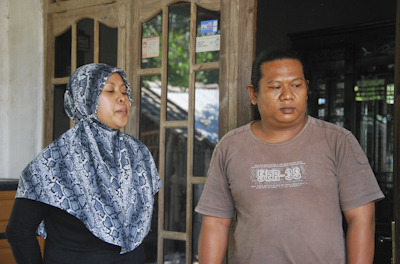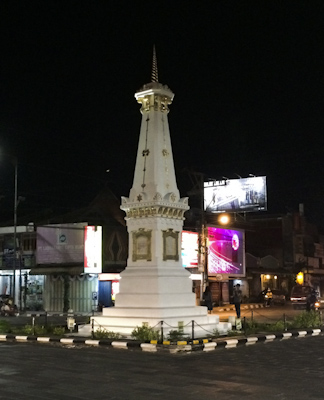Monday – August 24, 2015
Ubud is a town in the center of the island of Bali which, over the last decade, has become a prime tourist destination with many shops, traffic, restaurants, construction, hotels, spas, etc., etc. It wasn’t quite the tropical paradise we all had expected.
The Sacred Monkey Forest was located near our hotel in Ubud, so we stopped to visit the nature reserve and Hindu temple complex. The macaque monkeys roam freely and are protected because the reserve is sacred.
We were on our way to the northern coast of Bali to the village of Lovina located on the Java Sea. The distance isn’t far in miles, but takes several hours due to the narrow mountainous roads. I watched fields of rice, corn, and other vegetables pass outside my bus window. The dense tropical forests were full of trees and plants which were unfamiliar to me.
Jumena broke up the long trip with a stop at a fruit stand along the road which was brimming with every imaginable tropical fruit: mango, papaya, pineapple, bananas, salak (also called snake fruit), jack fruit, durian, oranges, coconut, melons, mangosteen, rambutan, soursop, and others which I didn’t get a chance to try.
The terrain became more mountainous and we learned that the region is recognized for cooler temperatures due to higher altitudes and the possibility of growing different varieties of crops.
Our next stop was the beautiful Ulun Danu Bratan Temple, located on Lake Bratan. The temple was built in 1663 for people to give offerings to the Balinese water, lake, and river goddess Dewi Danu. Lake Bratan is important as a main source of irrigation in central Bali. The grounds were beautiful and peaceful despite many tourists.
Of course, the light was wrong and the season was not right and there were too many people, so I couldn’t take the perfect photo of the temple! However, I tried. Classic pictures have been taken during the ‘rainy’ season when the temple is flooded and access is only by boat.
We had a tasty Chinese lunch overlooking the lake then we continued driving north. Everyone seems to own motorbikes like the one pictured below carrying an entire family.
The bus parked again and we hiked down along a narrow paved path along lush green vegetation, to see Gitgit Waterfalls.
Youngsters swam in the pool or cooled off under the falling waters. It was very peaceful and an idyllic setting. Close by was our destination of the Lovina Bali Resort. We checked in and I explored the property as the sun set across the black lava beach.
